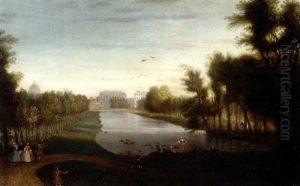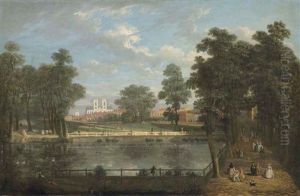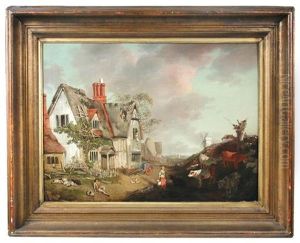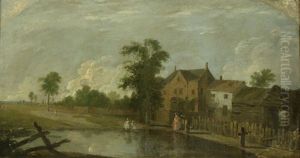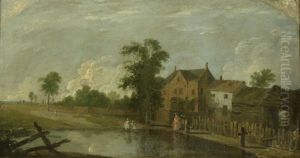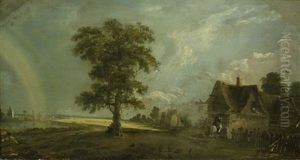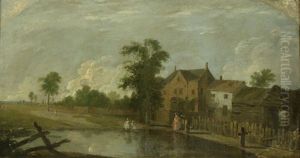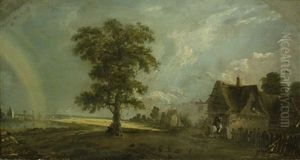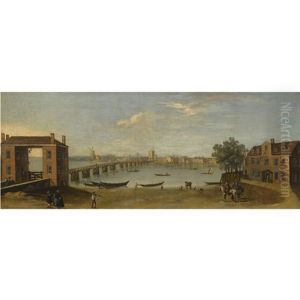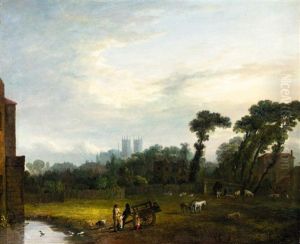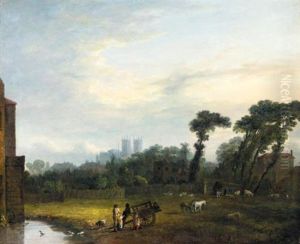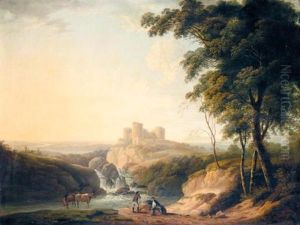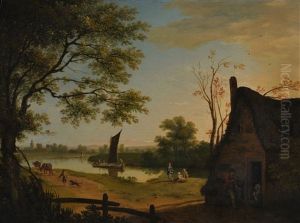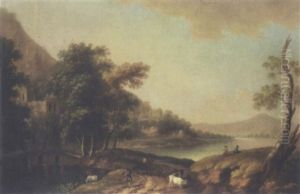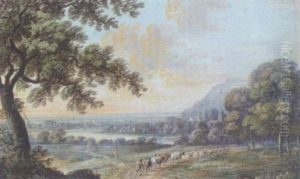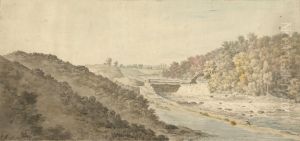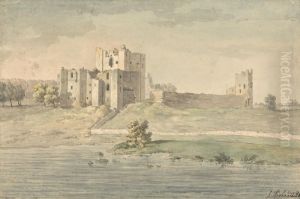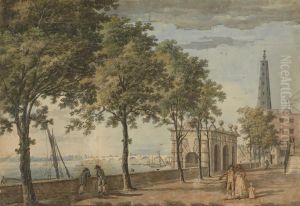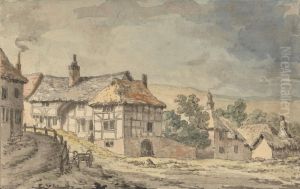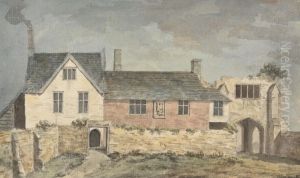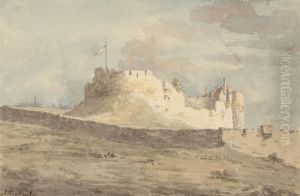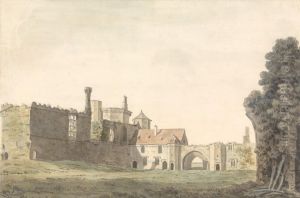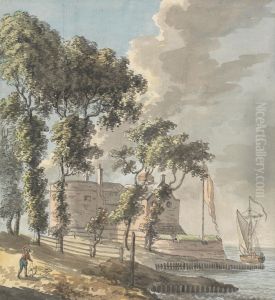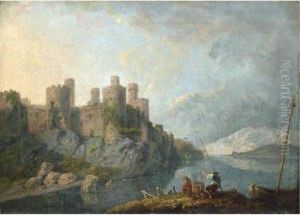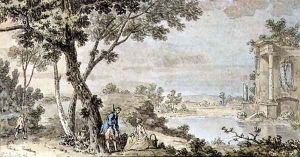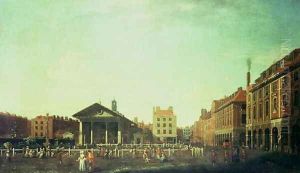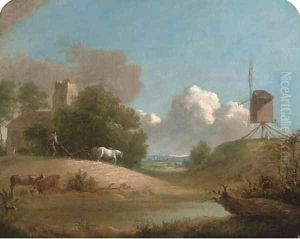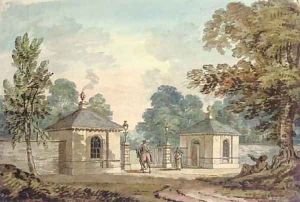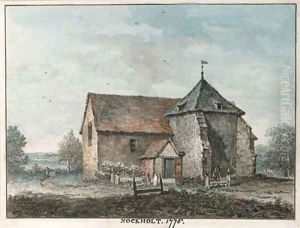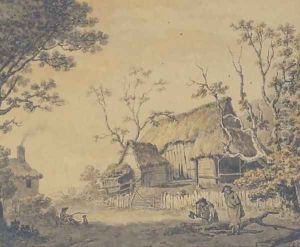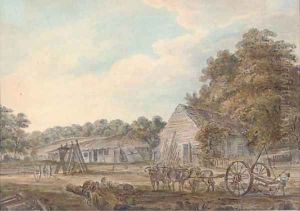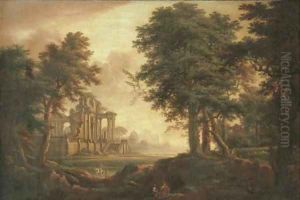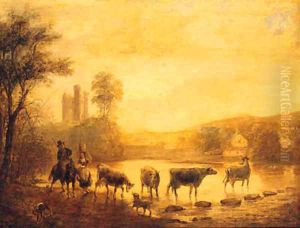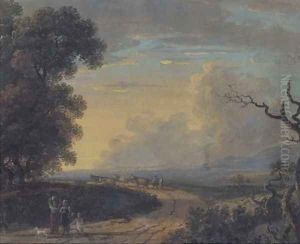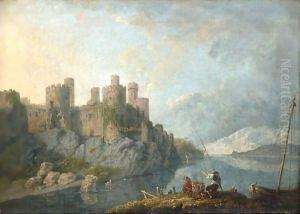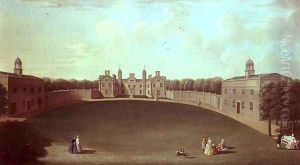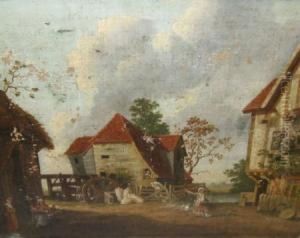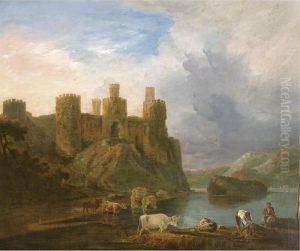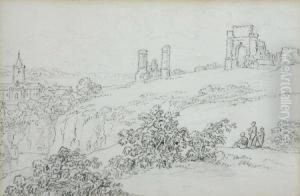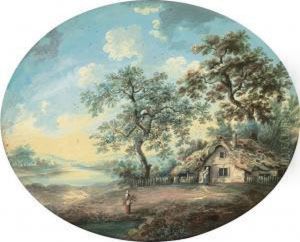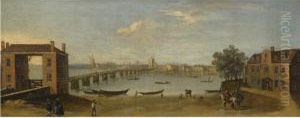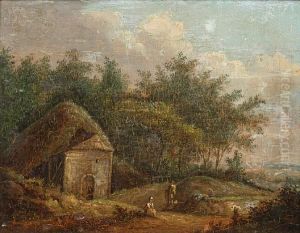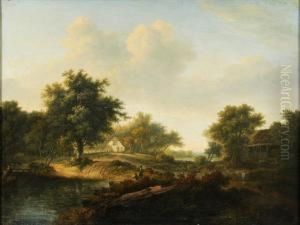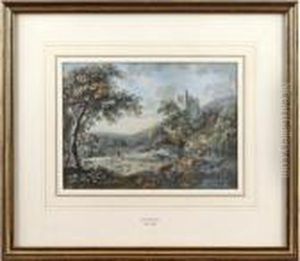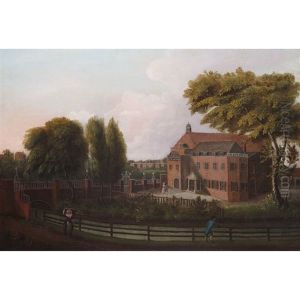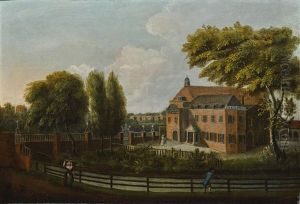John Inigo Richards Paintings
John Inigo Richards was an English landscape painter who played a significant role in the 18th-century British art scene. Born in 1731 in London, Richards was named after the famous architect Inigo Jones, suggesting that his family may have had an interest in the arts or architecture. He is best known as one of the founding members of the Royal Academy of Arts in London and served as the Academy's secretary from 1788 until his death in 1810.
Richards initially trained under the landscape painter George Lambert, one of the pioneers of British landscape painting who greatly influenced Richards' early work. He was part of a circle of artists that included Samuel Scott and the esteemed William Hogarth. Richards' style was characterized by its classical approach, often incorporating elements inspired by the Italianate landscapes of Claude Lorrain and Gaspard Dughet, whose works were highly regarded in England at the time.
Throughout his career, Richards exhibited a number of works at the Royal Academy and other venues. He was also a drawing master to the Prince of Wales, later King George IV, which was a testament to his recognition and status as an artist. Richards’ landscapes often depicted idyllic and pastoral scenes, ruins, and occasionally historical subjects, reflecting the taste of the period for the picturesque and the sublime.
Despite his contributions to British art and his role at the Royal Academy, Richards' work was somewhat overshadowed by the more famous landscape artists of his time, such as Richard Wilson and later, J.M.W. Turner. Nevertheless, his paintings can still be found in various art collections, and his influence on the development of landscape painting in Britain is recognized among art historians.
John Inigo Richards passed away in 1810 in London. His legacy remains as a part of the history of the Royal Academy and British landscape painting, marking him as a significant, if not widely celebrated, figure in the art world of his time.
